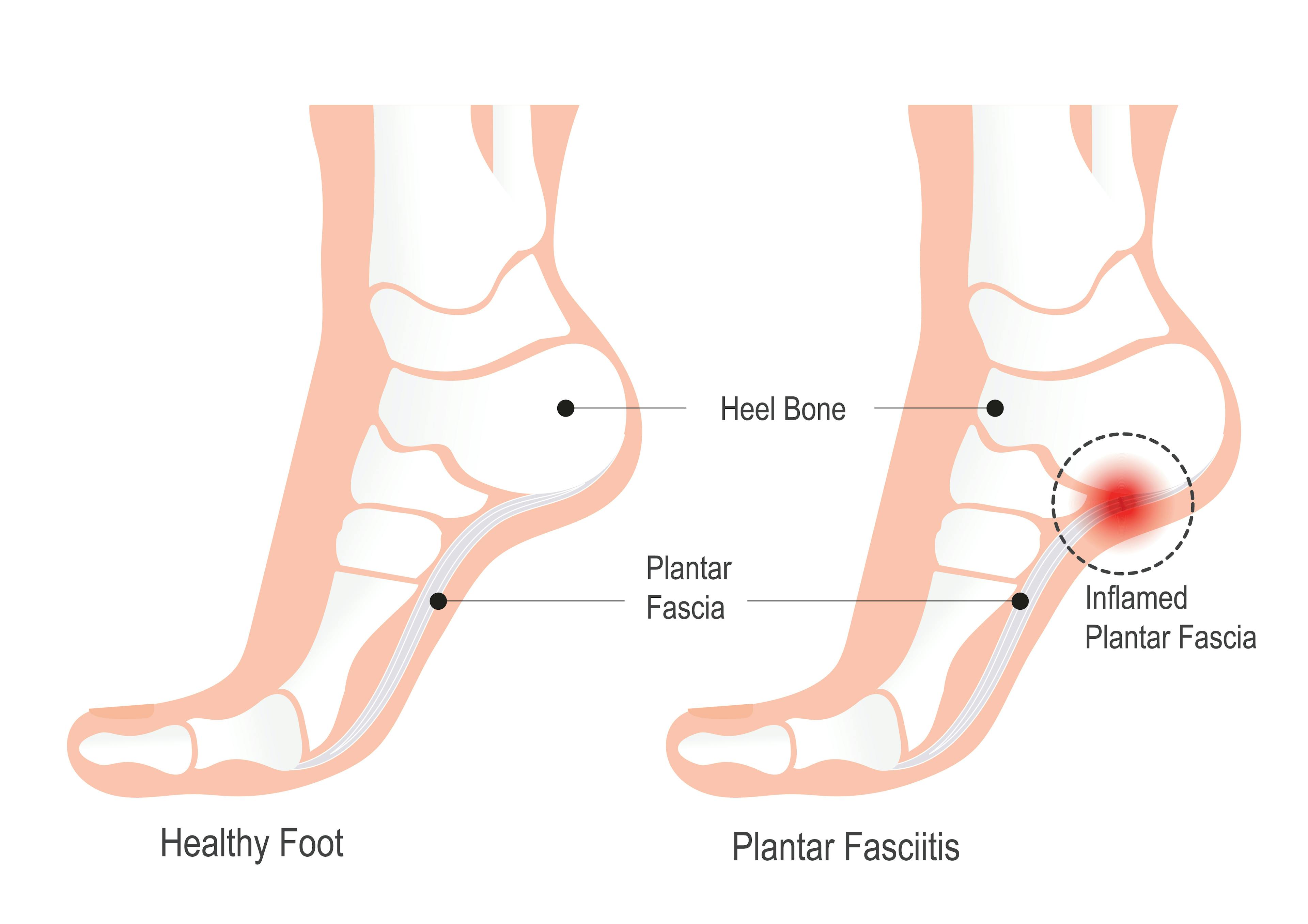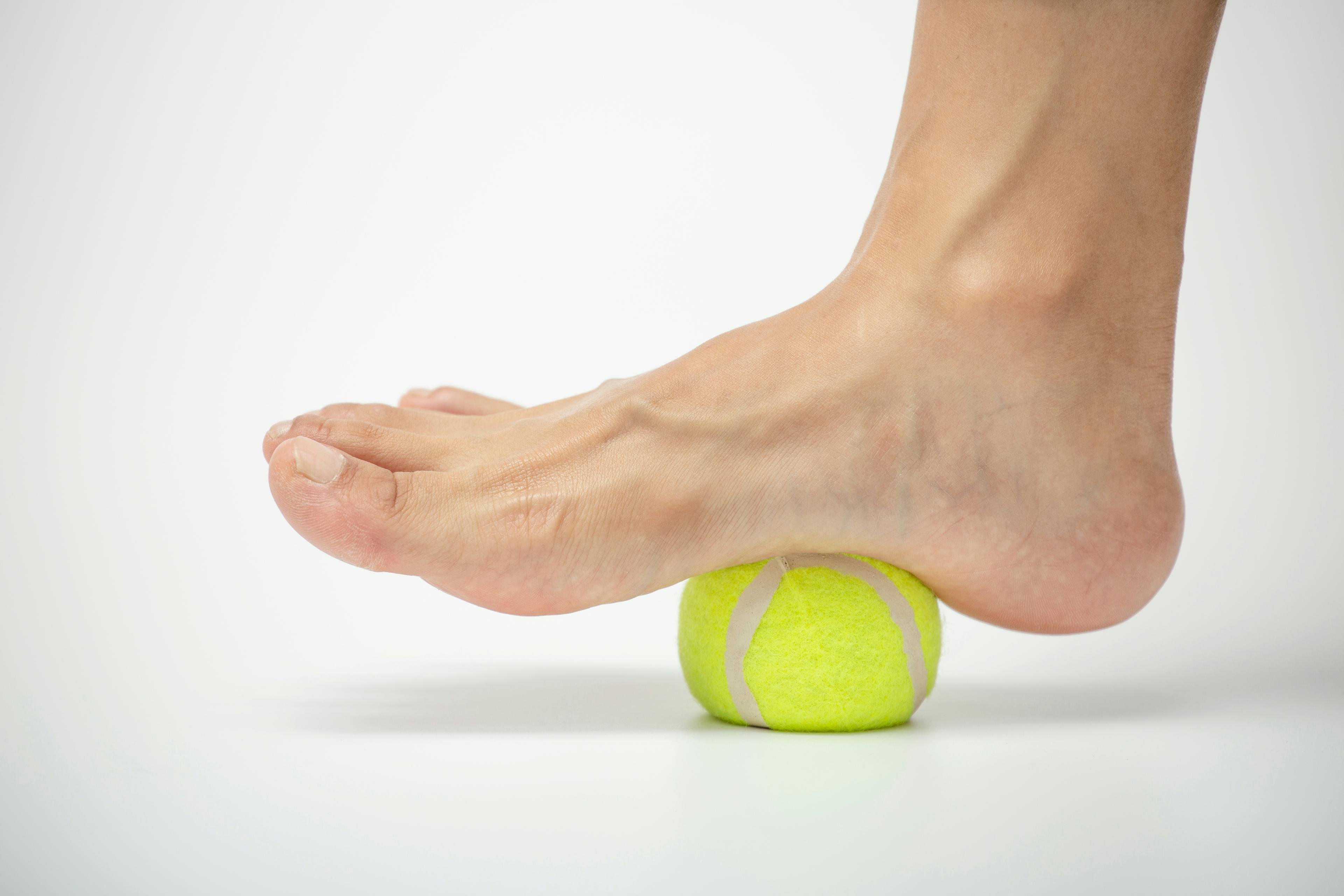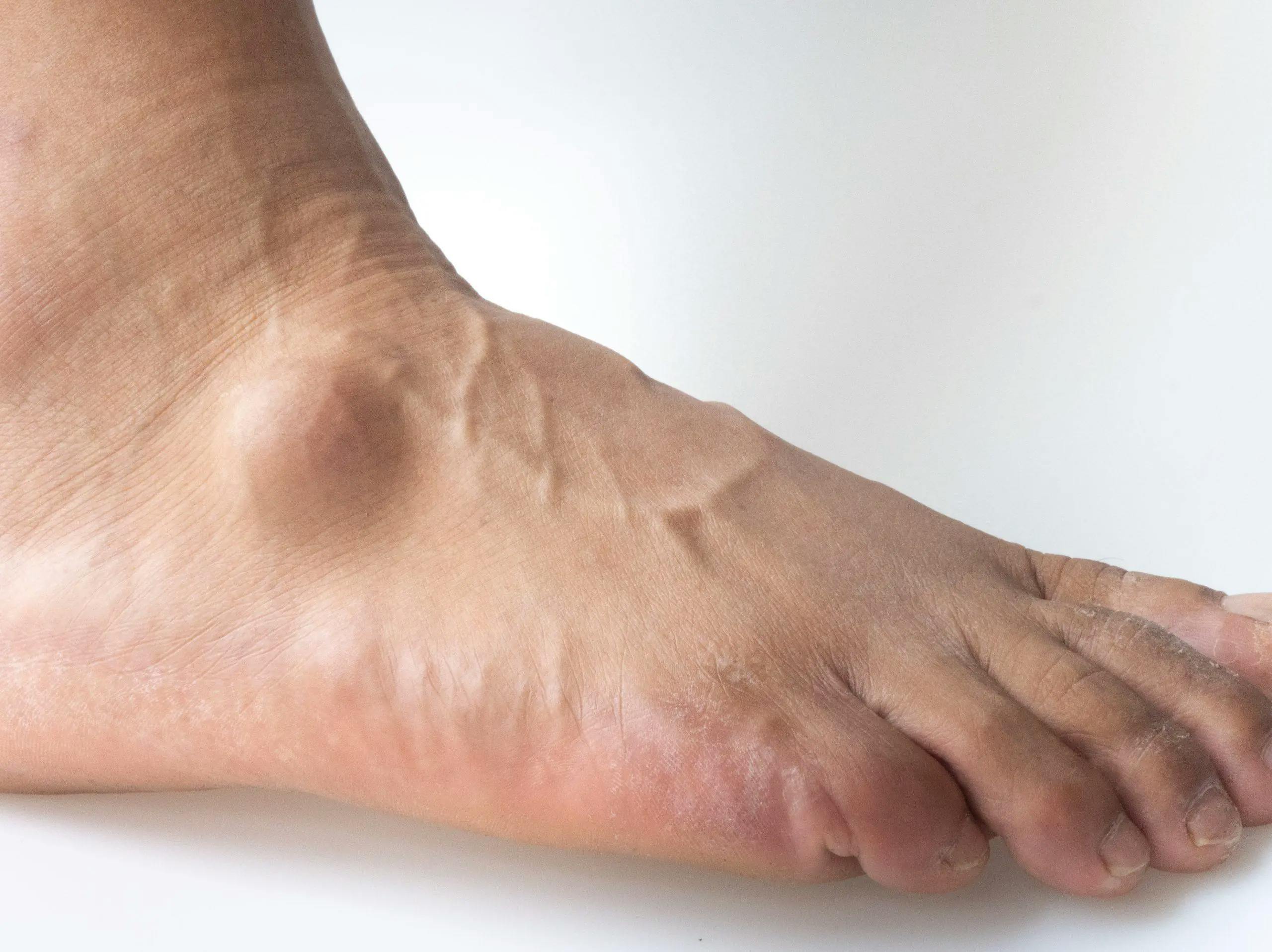Key Takeaways
Plantar fasciitis is a common cause of heel pain, especially after rest or prolonged standing.
Early, consistent treatment—like stretching, rest, and supportive shoes—often leads to faster recovery.
Podiatrists can provide advanced care if symptoms persist, helping prevent long-term complications.
Persistent heel pain can make everyday activities feel exhausting and burdensome. Whether it starts the moment you get out of bed or worsens throughout the day, discomfort in the bottom of the foot is often caused by plantar fasciitis.
This condition is especially common in people who spend a lot of time on their feet, have tight calf muscles, or wear shoes that lack adequate support.
While plantar fasciitis typically improves over time, recovery depends on the timing and consistency of treatment.
Understanding the symptoms, treatment options, and when to see a specialist can help you take steps toward lasting relief.
What is Plantar Fasciitis?
Plantar fasciitis occurs when the plantar fascia, a thick band of tissue that connects your heel to your toes, becomes irritated. This tissue helps support your arch and absorb impact when you walk. Overuse or stress on the area can cause small tears, leading to pain, inflammation, and stiffness.
Pain is often sharpest with your first steps in the morning or after sitting for long periods. Plantar fasciitis can affect both athletes and individuals with more sedentary routines, especially if poor footwear or foot mechanics are involved.

Can Plantar Fasciitis Go Away on Its Own?
In some cases, plantar fasciitis resolves without medical intervention, especially in early or mild instances. However, the healing process is often slow and inconsistent without professional care. In more persistent cases, pain tends to linger for several months or longer, disrupting daily life and mobility.
Delaying treatment for too long often causes changes in the way you walk, which, over time, places added stress on the knees, hips, or lower back.
That’s why early intervention matters: it supports a faster healing process and lowers the risk of more serious complications down the line, including chronic heel pain, an altered gait, or joint issues in other parts of the body.
How Long Does Recovery Take?
Most people begin to feel better within one to four weeks of starting consistent treatment. The timeline depends on factors such as activity level, foot structure, and how long symptoms have been present before treatment began.
Simple changes to reduce strain on the foot, such as adjusting exercise routines, wearing shoes with good arch support for plantar fasciitis, and practicing regular stretches, often help shorten the recovery period.
What Kind of Doctor Treats Plantar Fasciitis?
Podiatrists are foot and ankle specialists who diagnose and treat plantar fasciitis. They offer care ranging from recommended stretches and orthotics to advanced treatments like injections or surgery if needed.
Treatment Options for Plantar Fasciitis
Plantar fasciitis treatment often begins with conservative, at-home strategies and may progress to medical or surgical interventions, depending on the case. These may include:
At-Home and Conservative Treatments
Many cases improve with noninvasive options, such as:
- Gentle stretches for plantar fasciitis
- Use of ice packs to reduce inflammation
- Supportive footwear with proper arch support or orthotic inserts
- Periods of rest and reduced high-impact activity
- Over-the-counter anti-inflammatory medication (as advised by your provider)
These strategies are most beneficial when used consistently over time.
Medical Interventions
If symptoms worsen, your provider may recommend:
- Physical therapy to strengthen the foot and improve mobility
- Custom orthotics to correct foot alignment
- Night splints to gently stretch the plantar fascia while you sleep
- Corticosteroid injections to relieve stubborn inflammation
Surgical Options
Surgery is only considered in more advanced cases when other treatments have failed and quality of life is significantly affected. Procedures usually involve releasing part of the plantar fascia to reduce tension and support the recovery process.
How to Reduce Future Flare-Ups
After recovery, the following preventive measures can help keep symptoms from returning over time:
- Proper arch support in everyday footwear
- Regular shoe replacement to avoid excess wear and loss of structure
- Healthy weight management to minimize strain on the feet
- Consistent calf and arch stretching
- Gradual increases in physical activity instead of sudden extreme changes
Even once symptoms resolve, your feet may remain sensitive to overuse. Ongoing attention to your foot health helps you stay active without pain.
Plantar Fasciitis Relief at CLS Health
Foot pain from plantar fasciitis can be frustrating and disruptive, but it's also manageable with the right treatment. Early intervention, consistency, and proper guidance from a medical provider can make a significant difference in your recovery.





